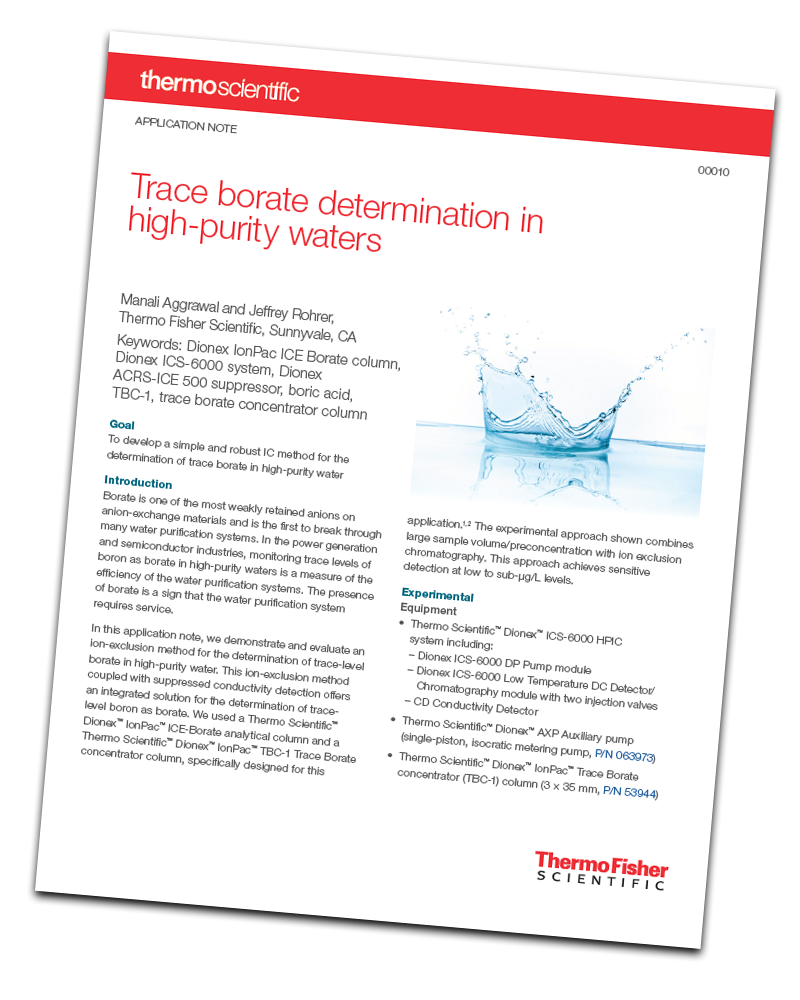This study demonstrated the determination of trace borate in high-purity waters using ion-exclusion chromatography and suppressed conductivity detection. This method offers an integrated solution of trace level boron as borate.
 Goal
Goal
To develop a simple and robust IC method for the determination of trace borate in high-purity water.
Introduction
Borate is one of the most weakly retained anions on anion-exchange materials and is the first to break through many water purification systems. In the power generation and semiconductor industries, monitoring trace levels of boron as borate in high-purity waters is a measure of the efficiency of the water purification systems. The presence of borate is a sign that the water purification system requires service.
In this application note, we demonstrate and evaluate an ion-exclusion method for the determination of trace-level borate in high-purity water. This ion-exclusion method coupled with suppressed conductivity detection offers an integrated solution for the determination of trace level boron as borate. We used a Thermo Scientific™ Dionex™ IonPac™ ICE-Borate analytical column and a Thermo Scientific™ Dionex™ IonPac™ TBC-1 Trace Borate concentrator column, specifically designed for this application. The experimental approach shown combines large sample volume/preconcentration with ion exclusion chromatography. This approach achieves sensitive detection at low to sub-μg/L levels.
Experimental
Full details of the experimental conditions can be found by downloading the application note.
Results and Discussion
Before running samples, check the performance of the column by reproducing the quality assurance report (QAR) chromatogram shipped with the column. For trace-level analysis, a preconcentration technique is used.
Separation
In ion exclusion mode, the separator resin bears anionic (negative) charge. A weak acid analyte such as borate is partitioned into the resin bed of the separator column to the extent that it is protonated. As an anion or a strong acid, the analyte is excluded due to electrostatic repulsion. The borate-mannitol anion is more conductive than borate itself and is therefore the preferred form for ion exclusion chromatography.
Conclusion
This study demonstrated the determination of trace borate in high-purity waters using a large sample volume/preconcentration method with ion-exclusion chromatography and suppressed conductivity detection. The method was validated with calibration and precision studies of DI water spiked with trace levels of borate.
